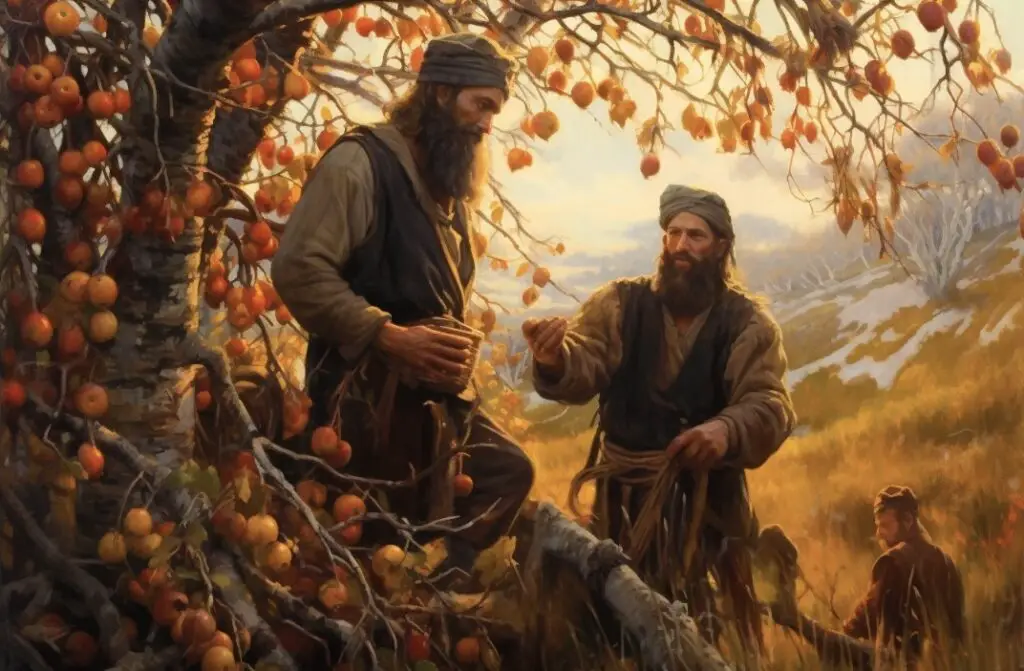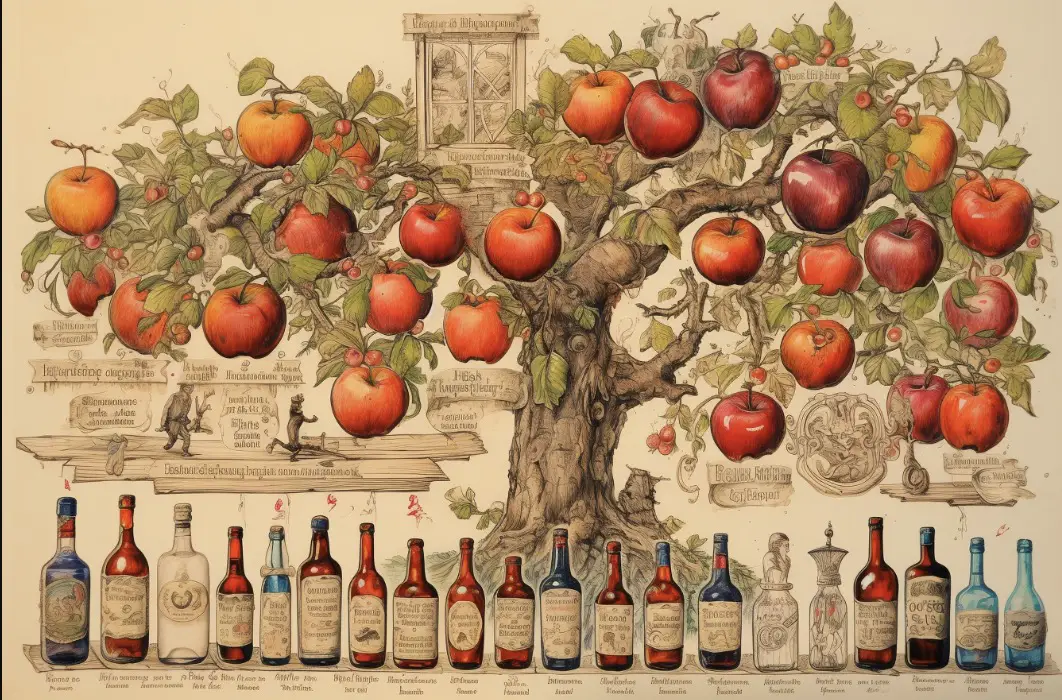There’s a special place in my heart for cider. Its crisp, fruity notes bring back memories of my earliest brewing days, where I experimented with apple varietals in search of the perfect brew.
This journey with cider has taken me not only through various fermentation processes but also through time, unveiling the intricate tapestry of its history and evolution.
Cider is a fermented beverage made from apple juice. Its origins trace back thousands of years across various cultures, evolving in taste, technique, and tradition. Join me as we explore this journey.
The Ancient Beginnings: A Whiff of Apple Wine
Historical evidence suggests that apple trees existed in the Nile Delta around 1300 BCE. It’s believed that as these trees spread to other regions, the art of fermenting their fruit also traveled.
The ancient Greeks and Romans wrote about a drink called ‘sikera’ which many historians believe was an early form of cider.

In my own experiments, I’ve tried recreating some of these ancient beverages, relying on natural yeast in the air to ferment the apple juice.
The results were raw and unrefined compared to today’s standards, but there was an undeniable charm in tasting a beverage that echoed the flavors of millennia past.
Medieval Europe: A Cider Revolution
Fast forward to the Middle Ages in Europe, especially in the northern regions like Normandy and Brittany, where apples grew in abundance. Cider became a staple drink, replacing beer in some regions. This is where the serious evolution of cider-making techniques began.

Monasteries were the brewing centers of that era. Monks experimented, honed their skills, and documented their processes. This documentation is a treasure for modern brewers like me, providing insights into the traditions we’ve inherited and modified.
The New World: Cider’s American Journey
When English settlers arrived in America, they brought with them their cider-making traditions.
The apple varieties in the New World, especially the crabapples, were wild and bitter, but perfect for fermentation. John Adams, the second president of the U.S., is said to have started his day, every day, with a glass of cider!

As a brewer, experimenting with American crabapples gave my ciders a unique, tart twist. The exploration of various apple types in different soils is what makes cider-making an ever-evolving art.
Modern Cider: A Renaissance in the 21st Century
Today, there’s a cider renaissance. With a surge in interest in artisanal and craft beverages, cider has found a new generation of aficionados.
Modern technology, combined with traditional techniques, has expanded the possibilities in cider-making. Dry, sweet, sparkling, still, hopped, spiced – the varieties are endless.
In my personal experience, hosting cider tasting sessions, there’s a growing appreciation for the complexities and nuances of this age-old drink. From its humble beginnings to its modern-day sophistication, cider continues its journey in the hearts and glasses of many.
Conclusion
Cider is more than just a beverage; it’s a testament to human ingenuity and the love for all things fermented. Its history spans continents, cultures, and centuries.
10 Fascinating Facts About Cider:
- Sikera might be the ancient predecessor of modern cider.
- Monks in Medieval Europe played a pivotal role in refining cider-making techniques.
- The Normandy region in France is often considered the world’s cider capital.
- Early American settlers drank cider as a safer alternative to water.
- President John Adams believed cider had health benefits.
- Prohibition in the 1920s had a devastating impact on the U.S. cider industry.
- Modern cideries often experiment with yeast strains for unique flavors.
- Ice cider, made from frozen apples, is a sweet dessert beverage.
- Ciders can range from extremely dry to dessert-wine sweet.
- The type of apple and its terroir play crucial roles in the cider’s final flavor profile.
Every sip of cider is like a journey through time. From the sharp tang of crabapples reminiscent of early American ciders to the refined notes of modern brews, each flavor tells a story. As a brewer, there’s nothing more satisfying than seeing someone’s eyes light up as they taste and appreciate this history-laden beverage. Cheers to many more years of cider exploration!
Frequently Asked Questions (FAQ)
1. What’s the difference between cider and apple juice?
Cider is a fermented beverage made from apple juice, whereas apple juice is simply the fresh-pressed liquid extracted from apples. Fermentation is the process where yeast and/or bacteria convert the sugars in the juice into alcohol. So, cider contains alcohol, while apple juice does not.
2. How does the alcohol content in cider compare to other alcoholic beverages?
The alcohol content in cider typically ranges from 4% to 6% ABV (alcohol by volume), making it comparable to many beers. However, this can vary based on the fermentation process and the addition of sugars or other fruits. In contrast, wines typically range from 12% to 15% ABV, and spirits can be much higher, often around 40% ABV or more.
3. Can cider be aged like wine?
Yes, some ciders can be aged, much like wines. Aging cider can result in mellowing of flavors and the development of new aromatic complexities. However, not all ciders are suitable for aging. It’s usually the higher-alcohol, tannic ciders that benefit most from aging, while fresher, more delicate ciders are best consumed young.
4. Are there non-alcoholic versions of cider?
Absolutely! Non-alcoholic ciders, often referred to as “apple ciders” in the U.S., are essentially apple juices that have been spiced and sometimes carbonated. They are especially popular in the autumn months and are a staple at many fall festivals and Thanksgiving celebrations.
5. What are some common cider apple varieties?
There are countless apple varieties used in cider-making, each contributing its unique flavor and aroma. Some popular cider apple varieties include Kingston Black, Dabinett, Foxwhelp, and Bittersweet. It’s the blend of different apples, much like grapes in wine-making, that gives each cider its distinct character.




